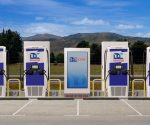Proposed federal standard would require cars to ‘prevent or limit operation’ by impaired drivers
[ad_1]
On Sunday, a bipartisan group of Senators published draft text of a massive new bipartisan infrastructure bill, proposing more than a trillion dollars in spending and a vast array of far-reaching provisions. But a little-noticed section in the bill could have significant implications in the fight against drunk driving, eventually mandating a new in-car safety technology to actively prevent Americans from driving while impaired.
Introduced under the heading “Advanced Impaired Driving Technology,” the provision would require the Department of Transportation to set a new standard for detecting and preventing impaired driving. The bill calls on the secretary of transportation to release a standard within three years, with the requirement taking effect for new cars three years after that. The specific provisions of the standard are vague, but it would require cars to “passively monitor the performance of a driver of a motor vehicle to accurately identify whether that driver may be impaired” and “prevent or limit motor vehicle operation” if impairment is detected.
The specific means of creating that system are still undetermined, but advocates say much of the technology is already available. Driver monitoring systems, which track a driver’s face or eyelids to ensure they are alert and actively piloting the vehicle, are already offered in some models by Lexus, BMW, and Mercedes Benz. Systems like lane detection could also be used to detect impairment, creating an alert if the driver is consistently veering outside their lane.
“Twenty years ago, this technology didn’t exist,” says Jason Levine of the Center for Auto Safety. “[But] we have the technology available now. We can install tech in vehicles that helps to monitor whether someone is impaired and stops that person from hurting themselves or others.”
Crucially, the new standard wouldn’t be limited to drunk drivers. Because the systems measure impairment directly, they would be just as effective at detecting impairment from prescription drugs, emotional distress, or simple distraction. A longer-term effort would also seek to mandate passive alcohol monitoring systems, like those currently being developed by Volvo.
While the provisions are aimed at creating a new mandatory requirement for automakers, such a requirement is still a long way off. Negotiations around the infrastructure bill are still in flux, and the provision could still be removed or altered by lawmakers. Even if it passes into law, the Department of Transportation will have wide leeway in how and when to implement the requirement and could easily delay it beyond the schedule set by Congress.
Still, auto safety advocates see this as a rare opportunity to fight back against impaired driving, which causes as many as 10,000 deaths a year by some estimates. “This will take some time, but you have to start somewhere,” says Cathy Chase, president of Advocates for Highway and Auto Safety. “Seatbelts, airbags, electronic stability control: all of those technologies started with this kind of rulemaking.”
Still, the new measures could face significant political blowback. Previous safety measures were essentially additional features protecting users in the event of a crash. But an impaired driving detector would directly limit the functionality of the vehicle, preventing users from driving at a moment when they would otherwise choose to drive.
But for auto safety advocates, the rising death toll from impaired driving is simply too urgent to ignore. “I think [the political fight] is a very real concern,” Chase says, “but we also have these victims whose family members were taken from them because someone got behind the wheel while impaired.”
For auto safety advocates like Levine, it’s a proposal that’s worth fighting for. “Will there be some people who don’t like this feature? Sure,” he says. “What we’ve got is a generational opportunity to stop adding lists of victims of drunk drivers to these memorials, and do so in a way that is using existing technology and getting after the performance as opposed to the behavior.”
[ad_2]
Source link










